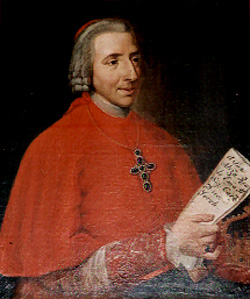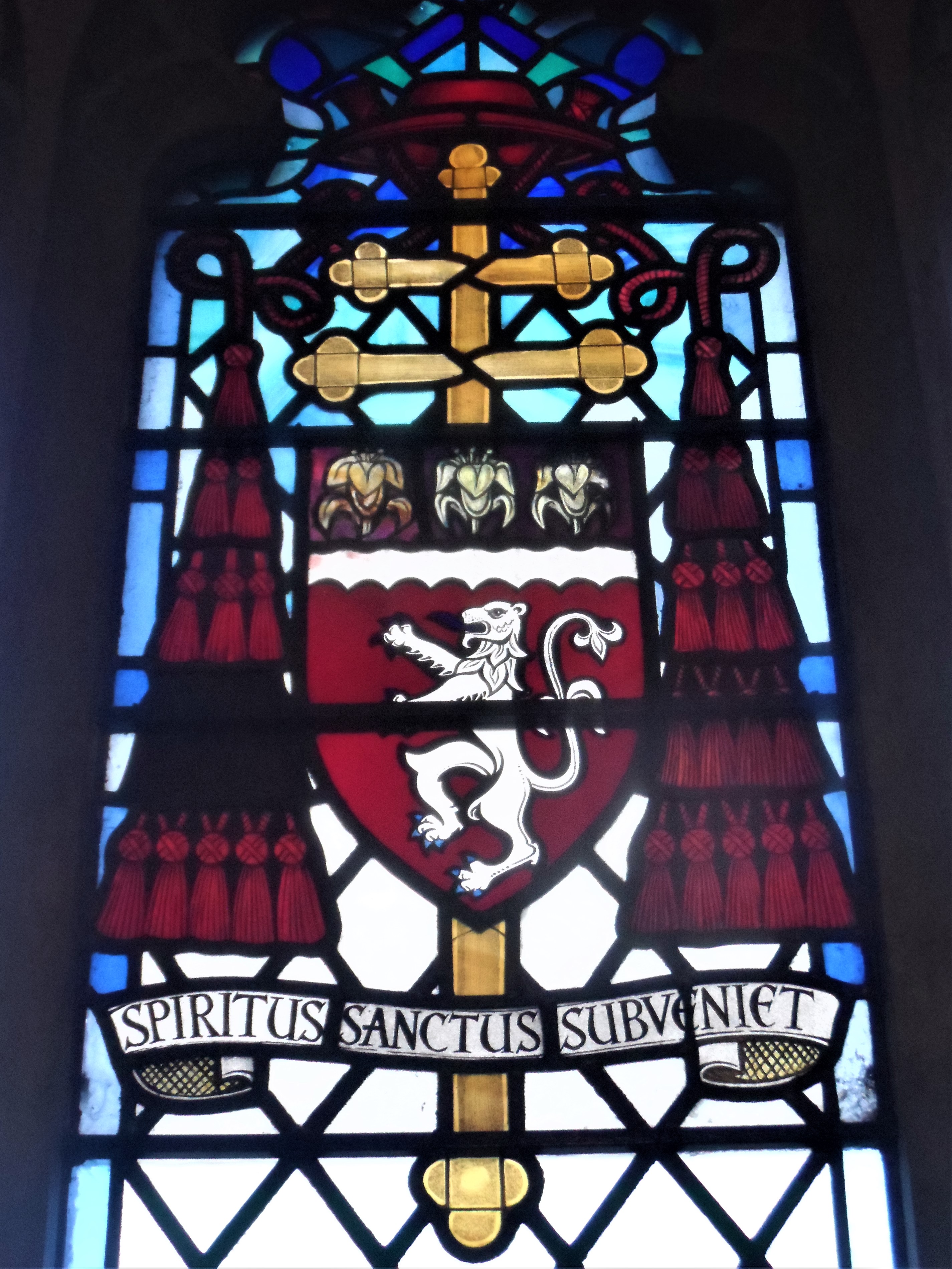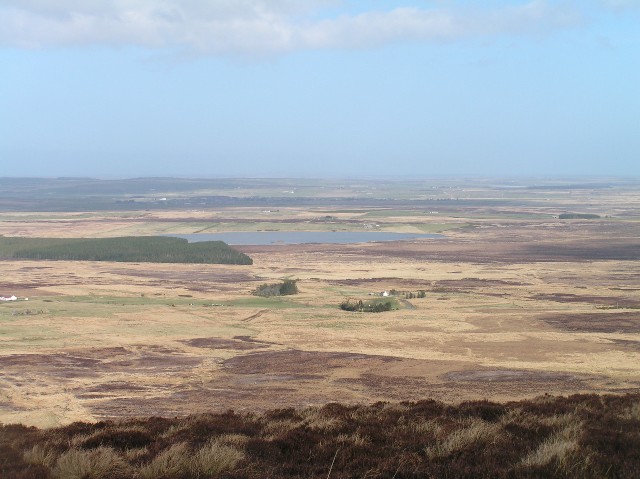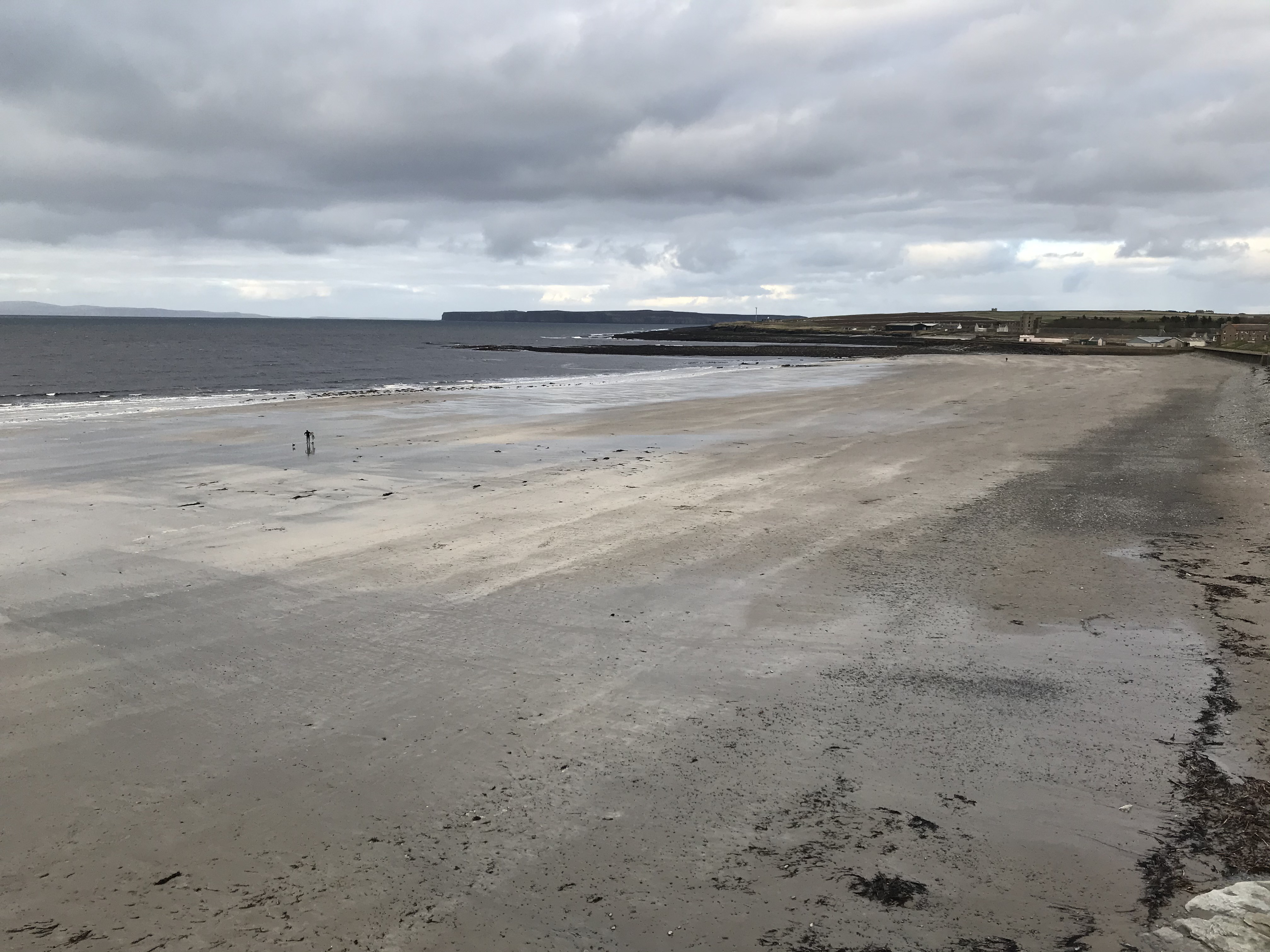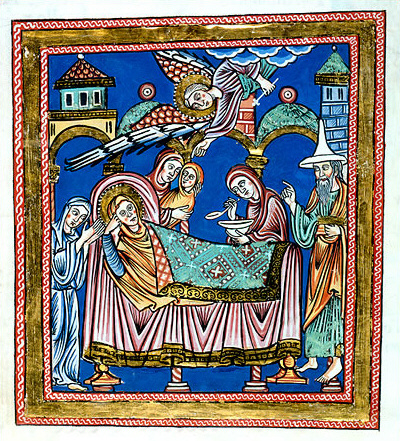|
Mario Conti (racing Driver)
Mario Joseph Conti (20 March 1934 – 8 November 2022) was a Scottish Catholic prelate who served as the Archbishop of the Metropolitan see of Glasgow, Scotland between 2002 and his retirement in 2012. Ordained to the priesthood in 1958, Conti spent most of his life in the service of the Church, being consecrated Bishop of Aberdeen in 1977 where he served until his appointment to Glasgow. Conti died in November 2022 after what was reported as a ‘short illness’ in the Queen Elizabeth University Hospital in Glasgow. Life Mario Joseph Conti was born on 20 March 1934, in Elgin, Moray, son of Louis Joseph Conti and Josephine Quintilia Conti (née ''Panicali''). He studied for the priesthood at The Scots College, Rome and was ordained a priest of the Diocese of Aberdeen in the Church of San Marcello al Corso, by Archbishop Luigi Traglia on 26 October 1958. After a period as Assistant Priest at St Mary's Cathedral in Aberdeen, Fr. Conti served as parish priest of the mos ... [...More Info...] [...Related Items...] OR: [Wikipedia] [Google] [Baidu] |
Most Reverend
The Most Reverend is a style applied to certain religious figures, primarily within the historic denominations of Christianity, but occasionally in some more modern traditions also. It is a variant of the more common style "The Reverend". Anglican In the Anglican Communion, the style is applied to archbishops (including those who, for historical reasons, bear an alternative title, such as presiding bishop), rather than the style "The Right Reverend" which is used by other bishops. "The Most Reverend" is used by both primates (the senior archbishop of each independent national or regional church) and metropolitan archbishops (as metropolitan of an ecclesiastical province within a national or regional church). Retired archbishops usually revert to being styled "The Right Reverend", although they may be appointed "archbishop emeritus" by their province on retirement, in which case they retain the title "archbishop" and the style "The Most Reverend", as a courtesy. Archbishop Desm ... [...More Info...] [...Related Items...] OR: [Wikipedia] [Google] [Baidu] |
The Scots College (Rome)
The Scots College (or The Pontifical Scots College) (Italian: Il Pontificio Collegio Scozzese) in Rome is the main seminary for the training of men for the priesthood from the dioceses of the Roman Catholic Church in Scotland. History The Scots College was established by Clement VIII on 5 December 1600, when it was assigned the revenue of the old Scots' hospice. At first the college was sited in a little house in what is known today as Via del Tritone, opposite the church of Santa Maria di Costantinopoli. In 1604 it was transferred to Via Felice, now called Via delle Quattro Fontane, where a bust of the last of the Stuarts, Henry Cardinal Duke of York can be seen. The college remained there until 1962. From 1615 to 1773, the Rectors of the Scots College were drawn from the ranks of the Society of Jesus. After the Jesuits were suppressed in 1773 by Clement XIV, by his brief ''Dominus ac Redemptor'', the College was administered by a series of Italian clerics until 1800 and the a ... [...More Info...] [...Related Items...] OR: [Wikipedia] [Google] [Baidu] |
Midlothian
Midlothian (; gd, Meadhan Lodainn) is a historic county, registration county, lieutenancy area and one of 32 council areas of Scotland used for local government. Midlothian lies in the east-central Lowlands, bordering the City of Edinburgh, East Lothian and the Scottish Borders. Midlothian emerged as a county in the Middle Ages under larger boundaries than the modern council area, including Edinburgh itself. The county was formally called the "shire of Edinburgh" or Edinburghshire until the twentieth century. It bordered West Lothian to the west, Lanarkshire, Peeblesshire and Selkirkshire to the south, and East Lothian, Berwickshire and Roxburghshire to the east. Traditional industries included mining, agriculture and fishing – although the modern council area is now landlocked. History Following the end of the Roman occupation of Britain, Lothian was populated by Brythonic-speaking ancient Britons and formed part of Gododdin, within the Hen Ogledd or Old North. In the ... [...More Info...] [...Related Items...] OR: [Wikipedia] [Google] [Baidu] |
Aberdeen
Aberdeen (; sco, Aiberdeen ; gd, Obar Dheathain ; la, Aberdonia) is a city in North East Scotland, and is the third most populous city in the country. Aberdeen is one of Scotland's 32 local government council areas (as Aberdeen City), and has a population estimate of for the city of Aberdeen, and for the local council area making it the United Kingdom's 39th most populous built-up area. The city is northeast of Edinburgh and north of London, and is the northernmost major city in the United Kingdom. Aberdeen has a long, sandy coastline and features an oceanic climate, with cool summers and mild, rainy winters. During the mid-18th to mid-20th centuries, Aberdeen's buildings incorporated locally quarried grey granite, which may sparkle like silver because of its high mica content. Since the discovery of North Sea oil in 1969, Aberdeen has been known as the offshore oil capital of Europe. Based upon the discovery of prehistoric villages around the mouths of the rivers ... [...More Info...] [...Related Items...] OR: [Wikipedia] [Google] [Baidu] |
Gordon Gray (cardinal)
Gordon Joseph Gray (10 August 1910 – 19 July 1993) was a Scottish cardinal of the Catholic Church. He served as Archbishop of St. Andrews and Edinburgh from 1951 to 1985, and was elevated to the cardinalate in 1969. He was the first resident Scottish cardinal since the Restoration of the Scottish hierarchy in 1878 and the first since the Reformation. Early life Gordon Gray was born in Leith to Frank and Angela (née Oddy) Gray. He was the youngest of three children, he had a sister, Josephine, and a brother, George. After he attended Holy Cross Academy in Edinburgh, his uncle John Gray, a canon, suggested that he become a priest. He then studied at St. Joseph's Junior College in East Sussex from 1927 to July 1929, and entered St. John's Seminary in Wonersh in September 1929. Priesthood He was ordained to the priesthood by Archbishop Andrew McDonald, O.S.B. on 15 June 1935 and did pastoral work in the Archdiocese of St Andrews and Edinburgh until 1947. Attending St. Andrews ... [...More Info...] [...Related Items...] OR: [Wikipedia] [Google] [Baidu] |
Bishop Of Aberdeen
The Bishop of Aberdeen (originally Bishop of Mortlach, in Latin Murthlacum) was the ecclesiastical head of the Diocese of Aberdeen, one of Scotland's 13 medieval bishoprics, whose first recorded bishop is an early 12th-century cleric named Nechtan. It appears that the episcopal seat had previously been at Mortlach (Mòrthlach), but was moved to Aberdeen during the reign of King David I of Scotland. The names of three bishops of Mortlach are known, the latter two of whom, "Donercius" and "Cormauch" (Cormac), by name only. The Bishop of Aberdeen broke communion with the Roman Catholic Church after the Scottish Reformation. Following the Revolution of 1688, the office was abolished in the Church of Scotland, but continued in the Scottish Episcopal Church. A Roman Catholic diocese was recreated in Aberdeen in 1878. Pre-Reformation bishops List of known bishops of Mortlach List of known bishops of Aberdeen The Bishopric of Aberdeen, as the Bishopric of Aberdeen, appears to da ... [...More Info...] [...Related Items...] OR: [Wikipedia] [Google] [Baidu] |
Caithness
Caithness ( gd, Gallaibh ; sco, Caitnes; non, Katanes) is a historic county, registration county and lieutenancy area of Scotland. Caithness has a land boundary with the historic county of Sutherland to the west and is otherwise bounded by sea. The land boundary follows a watershed and is crossed by two roads (the A9 and the A836) and by one railway (the Far North Line). Across the Pentland Firth, ferries link Caithness with Orkney, and Caithness also has an airport at Wick. The Pentland Firth island of Stroma is within Caithness. The name was also used for the earldom of Caithness ( 1334 onwards) and for the Caithness constituency of the Parliament of the United Kingdom (1708 to 1918). Boundaries are not identical in all contexts, but the Caithness area lies entirely within the Highland council area. Toponymy The ''Caith'' element of the name ''Caithness'' comes from the name of a Pictish tribe known as the ''Cat'' or ''Catt'' people, or ''Catti'' (see Kingdom of Ca ... [...More Info...] [...Related Items...] OR: [Wikipedia] [Google] [Baidu] |
Thurso
Thurso (pronounced ; sco, Thursa, gd, Inbhir Theòrsa ) is a town and former burgh on the north coast of the Highland council area of Scotland. Situated in the historical County of Caithness, it is the northernmost town on the island of Great Britain. From a latitudal standpoint, Thurso is located further north than the southernmost point of Norway and in addition lies more than north of London. It lies at the junction of the north–south A9 road and the west–east A836 road, connected to Bridge of Forss in the west and Castletown in the east. The River Thurso flows through the town and into Thurso Bay and the Pentland Firth. The river estuary serves as a small harbour. At the 2011 Census, Thurso had a population of 7,933. The larger Thurso civil parish including the town and the surrounding countryside had a population of 9,112. Thurso functioned as an important Norse port, and later traded with ports throughout northern Europe until the 19th century. A thriving fish ... [...More Info...] [...Related Items...] OR: [Wikipedia] [Google] [Baidu] |
Wick, Highland
Wick ( gd, Inbhir Ùige (IPA: �inivɪɾʲˈuːkʲə, sco, Week) is a town and royal burgh in Caithness, in the far north of Scotland. The town straddles the River Wick and extends along both sides of Wick Bay. "Wick Locality" had a population of 6,954 at the time of the 2011 census, a decrease of 3.8% from 2001. Pulteneytown, which was developed on the south side of the river by the British Fisheries Society during the 19th century, was officially merged into the burgh in 1902. Elzy was described as on the coast a couple of miles east of Wick in 1836. The town is on the main road (the A99–A9 road) linking John o' Groats with southern Britain. The Far North railway line links Wick railway station with southern Scotland and with Thurso, the other burgh of Caithness. Wick Airport is on Wick's northern outskirts. The airport has two usable runways. A third is derelict. The main offices of ''The John O'Groat Journal'' and '' The Caithness Courier'' are located in Wick, as ar ... [...More Info...] [...Related Items...] OR: [Wikipedia] [Google] [Baidu] |
St Anne
According to Christian apocryphal and Islamic tradition, Saint Anne was the mother of Mary and the maternal grandmother of Jesus. Mary's mother is not named in the canonical gospels. In writing, Anne's name and that of her husband Joachim come only from New Testament apocrypha, of which the Gospel of James (written perhaps around 150) seems to be the earliest that mentions them. The mother of Mary is mentioned but not named in the Quran. Christian tradition The story is similar to that of Samuel, whose mother Hannah ( he, ''Ḥannāh'' "favour, grace"; etymologically the same name as Anne) had also been childless. The Immaculate Conception was eventually made dogma by the Catholic Church following an increased devotion to Anne in the 12th century. Dedications to Anne in Eastern Christianity occur as early as the 6th century. In the Eastern Orthodox tradition, Anne and Joachim are ascribed the title ''Ancestors of God'', and both the Nativity of Mary and the Presentation of ... [...More Info...] [...Related Items...] OR: [Wikipedia] [Google] [Baidu] |
Joachim
Joachim (; ''Yəhōyāqīm'', "he whom Yahweh has set up"; ; ) was, according to Christian tradition, the husband of Saint Anne and the father of Mary, the mother of Jesus. The story of Joachim and Anne first appears in the Biblical apocryphal Gospel of James. His feast day is 26 July, a date shared with Saint Anne. In Christian tradition The story of Joachim, his wife Anne (or Anna), and the miraculous birth of their child Mary, the mother of Jesus, was told for the first time in the 2nd-century apocryphal infancy-gospel the Gospel of James (also called Protoevangelium of James). Joachim was a rich and pious man, who regularly gave to the poor. However, Charles Souvay, writing in the ''Catholic Encyclopedia'', says that the idea that Joachim possessed large herds and flocks is doubtful. At the temple, Joachim's sacrifice was rejected, as the couple's childlessness was interpreted as a sign of divine displeasure. Joachim consequently withdrew to the desert, where he fasted and ... [...More Info...] [...Related Items...] OR: [Wikipedia] [Google] [Baidu] |
San Marcello Al Corso
San Marcello al Corso, a church in Rome, Italy, is a titular church whose cardinal-protector normally holds the (intermediary) rank of cardinal-priest. The church, dedicated to Pope Marcellus I (d. AD 309), is located just inset from Via del Corso, in ancient times called ''via Lata'', and which now connects Piazza Venezia to Piazza del Popolo. It stands diagonal from the church of Santa Maria in Via Lata and two doors from the Oratory of Santissimo Crocifisso. History While the tradition holds that the church was built over the prison of Pope Marcellus I (d. 309), it is known that the ''Titulus Marcelli'' was present no later than 418, when Pope Boniface I was elected there. The "Septiformis" litany, commanded by Pope Gregory I in 590, saw the men moving from San Marcello. Pope Adrian I, in the 8th century, built a church on the same place, which is currently under the modern church. The corpse of Cola di Rienzo was held in the church for three days after his execution in ... [...More Info...] [...Related Items...] OR: [Wikipedia] [Google] [Baidu] |
